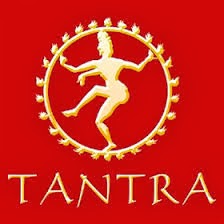
Tantra is that Asian body of beliefs and practices which, working from the principle that the universe we experience is nothing other than the concrete manifestation of the divine energy of the godhead that creates and maintains that universe, seeks to ritually appropriate and channel that energy, within the human microcosm, in creative and emancipatory ways.
But I personally relate to the definition given by Prabhat Ranjan Sarkar to some extent. He describes a tantric individual and a tantric cult:
A person who, irrespective of caste, creed or religion, aspires for spiritual expansion or does something concrete, is a Tantric. Tantra in itself is neither a religion nor an "ism". Tantra is a fundamental spiritual science. So wherever there is any spiritual practice it should be taken for granted that it stands on the Tantric cult."
I only disagree on the statement where Tantra is said to be a science... Tantra is not science as it can not be replicated in same conditions by other different individuals. Results vary from person to person and there is no qualitative or quantitative measurement which can be done. Same mantra my be effective for one but not for the other and level of outcomes also vary from person to person. So it is more of a belief than science yes it works but same results can not be replicated by any 2 people with same method or tantric procedure. So it does not fulfill the definition of a science.
Classification
Tantra has two main branches, which are known as vama marga and dakshina marga. Vama marga is the left path which combines sexual life with yoga practices in order to explode the dormant energy centres. Dakshina marga is the right path of yoga practices without sexual enactment. Previously, due to the barriers in sexual life, the path most widely followed was dakshina marga. Today, however, these barriers are rapidly being broken, and the path most sought after by the people everywhere is vama marga, which utilizes sexual life for spiritual development.
According to tantra, sexual life has a threefold purpose. Some practise it for procreation, others for pleasure, but the tantric yogi practises it for samadhi. He does not hold any negative views about it. He does it as a part of his sadhana. But, at the same time, he realizes that for spiritual purposes, the experience must be maintained. Ordinarily this experience is lost before one is able to deepen it. By mastering certain techniques, however, this experience can become continuous even in daily life. Then the silent centres of the brain are awakened and start to function all the time.
Path of yogis not bhogis (bhogis are people under control of worldly pleasures)
In tantra, the practice of maithuna (sex) is said to be the easiest way to awaken sushumna, because it involves an act which most people are already accustomed to. But, frankly speaking, very few are prepared for this path. Ordinary sexual interaction is not maithuna. The physical act may be the same, but the background is totally different.
In the relationship between husband and wife, for example, there is dependency and ownership. But in maithuna there is no idea of ownership; each partner is independent, one unto himself, Another difficult thing in tantric sadhana is cultivating the attitude of passionless-ness. The man has to virtually become brahmacharya (not doing sex for basic human desire but for a higher goal of spiritual awakening, achieving samadhi etc.) in order to free the mind and emotions of sexual thoughts and passion which normally arise in the presence of a woman.
Both partners must be absolutely purified and controlled internally and externally before they practise maithuna. This is hard for the ordinary person to comprehend because for most people, sexual interaction is the result of passion and physical or emotional attraction, either for progeny or pleasure. It is only when you are purified that these instinctive urges are absent. This is why, according to tradition, the path of dakshina marga must be followed for many years before the path of vama marga can be entered. Then the interaction of maithuna does not take place for physical gratification. The purpose is very clear - awakening of sushumna, raising the kundalini energy from mooladhara chakra and exploding the unconscious areas of the brain.
If this is not clear when you practise the kriyas and sushumna becomes active, you will not be able to face the awakening. Your head will get hot and you will not be able to control the passion and excitement, because you have not tranquillized your brain.
Therefore, in my opinion, only those who are adepts in yoga qualify for vama marga. This path is not to be used indiscriminately as a pretext for self-indulgence. It is meant for mature and serious minded householder Sadhakas and even sanyases, who are evolved, who have been practising sadhana to awaken the energy potential and to attain samadhi. They must utilize this path as a vehicle of awakening. Otherwise it becomes a path of downfall.
I hope this explanation have also cleared out doubts among people in the western world who come to me thinking Tantra is just meant to increase sexual power or do perform sex in a particular way to get more pleasure... No it is not the truth rather the basic Goal here is spirituality not getting more and more under control of vikaras (there are 5 vikaras sex is one of em i will discuss about vikaras in upcoming videos- for now, vikaras are basic human emotions which create hindrance is spiritual growth and one must always try to control them even if not a sadhaka or a tantrik).
Many Blessings to all
Tantrapsychic AKA Tantra :)



 RSS Feed
RSS Feed
